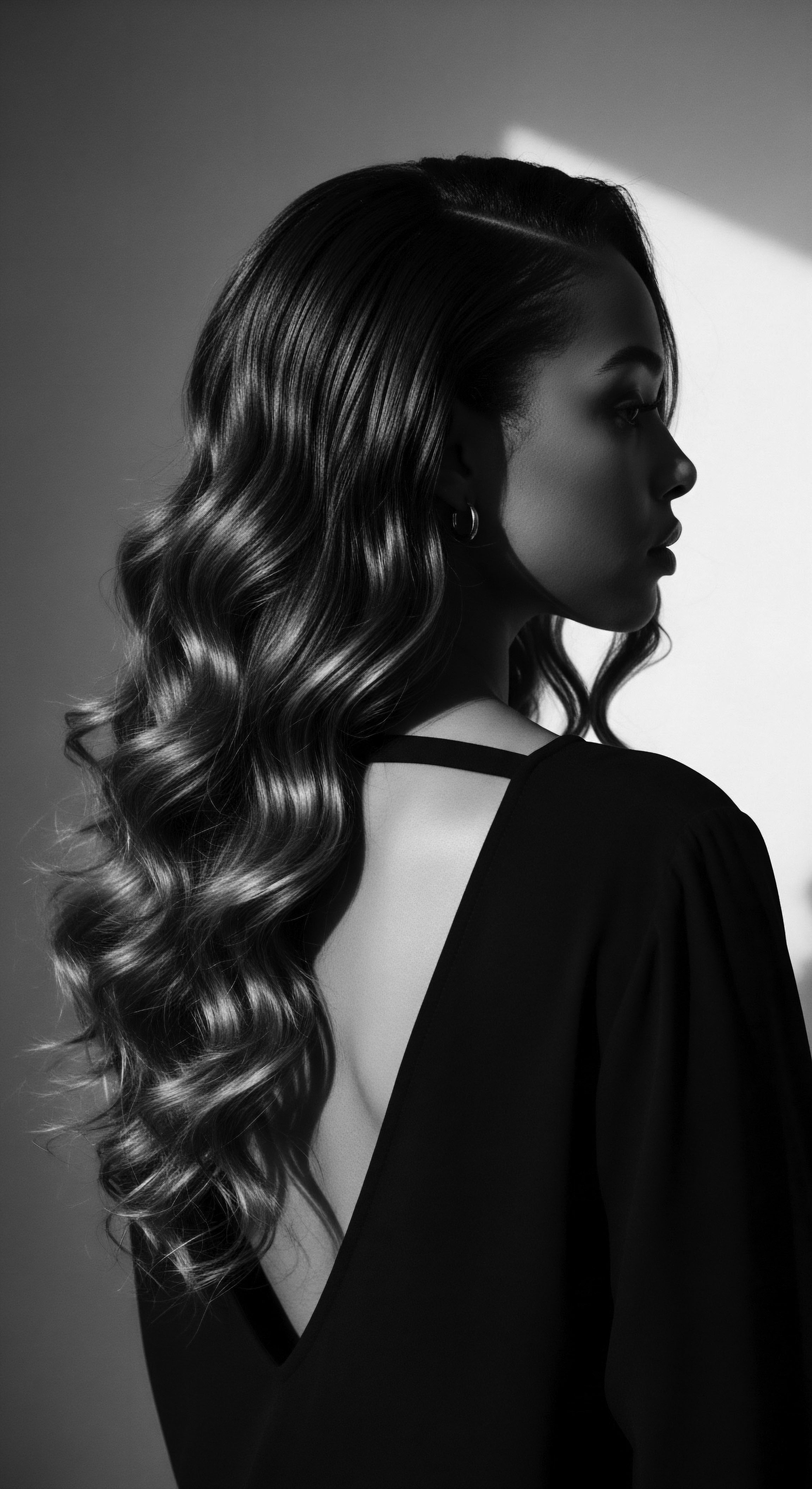
Fundamentals
The very notion of ‘Lipid Composition’ within the realm of textured hair care, particularly for Black and mixed-race strands, extends far beyond a mere scientific term. It speaks to a profound connection, a whispered dialogue between the intricate biology of our hair and the ancestral wisdom passed down through generations. To truly grasp its meaning, one must first recognize it as a foundational element, a silent architect shaping the very character of each coil and curl.
This initial exploration offers a gentle entry point, unveiling the elemental building blocks of hair’s natural oils and fats, revealing how these components lay the groundwork for hair health, resilience, and appearance. It is an invitation to understand the fundamental language of our hair’s inherent needs, a language spoken through the very lipids that comprise its structure.
At its simplest, lipid composition refers to the specific array and proportion of fatty substances present within and upon the hair fiber. These organic compounds, diverse in their molecular structures, are not simply decorative; they are vital for the hair’s integrity and its interaction with the world. They act as a natural sealant, a protective mantle, and a conduit for nourishment, influencing everything from the hair’s elasticity to its luster. Without these essential lipids, hair would lack its inherent suppleness, becoming brittle and vulnerable to environmental challenges.
For textured hair, where unique structural patterns inherently pose distinct needs, the role of these lipids becomes even more pronounced. Their presence, or absence, dictates much about how a strand behaves, how it responds to moisture, and how it resists the rigors of daily life.
Lipid composition, at its core, is the distinctive arrangement of fatty substances within and upon hair, acting as a foundational shield and nourishment for each strand.
The lipids within hair originate from two primary sources. Endogenous Lipids are those woven directly into the hair shaft during its formation within the follicle. These include fatty acids, cholesterol, ceramides, and cholesterol sulfate. They are integral to the hair’s internal architecture, residing within the cuticle and the cell membrane complex, acting as a cellular mortar.
These internal lipids contribute significantly to the hair’s mechanical properties, influencing its strength and flexibility. Their presence ensures the structural cohesion of the hair, allowing it to bend and move without immediate breakage.
Then there are Exogenous Lipids, which are primarily the natural oils, or sebum, produced by the sebaceous glands on the scalp. These lipids coat the hair’s surface, offering a protective layer against external aggressors and helping to maintain moisture balance. This sebaceous coating, a natural gift from the scalp, plays a critical role in how hair feels and looks.
It helps to lubricate the strands, reducing friction and imparting a natural sheen. The journey of these external lipids from the scalp down the hair shaft is a particularly significant aspect for textured hair, as the helical nature of curls and coils often impedes the even distribution of sebum, leading to differential oiliness at the scalp and dryness along the lengths.
Understanding this fundamental distinction between internal and external lipids provides a clearer picture of how hair sustains itself and how traditional care practices often sought to supplement or support these natural processes. Long before the advent of modern scientific tools, ancestral communities possessed an intuitive understanding of hair’s needs, often turning to plant-based oils and butters that mimicked or augmented the hair’s own lipid defenses. These early applications, rooted in observation and communal knowledge, laid the groundwork for the intricate hair care rituals that would develop over centuries, each gesture a testament to a deep, abiding reverence for the hair.
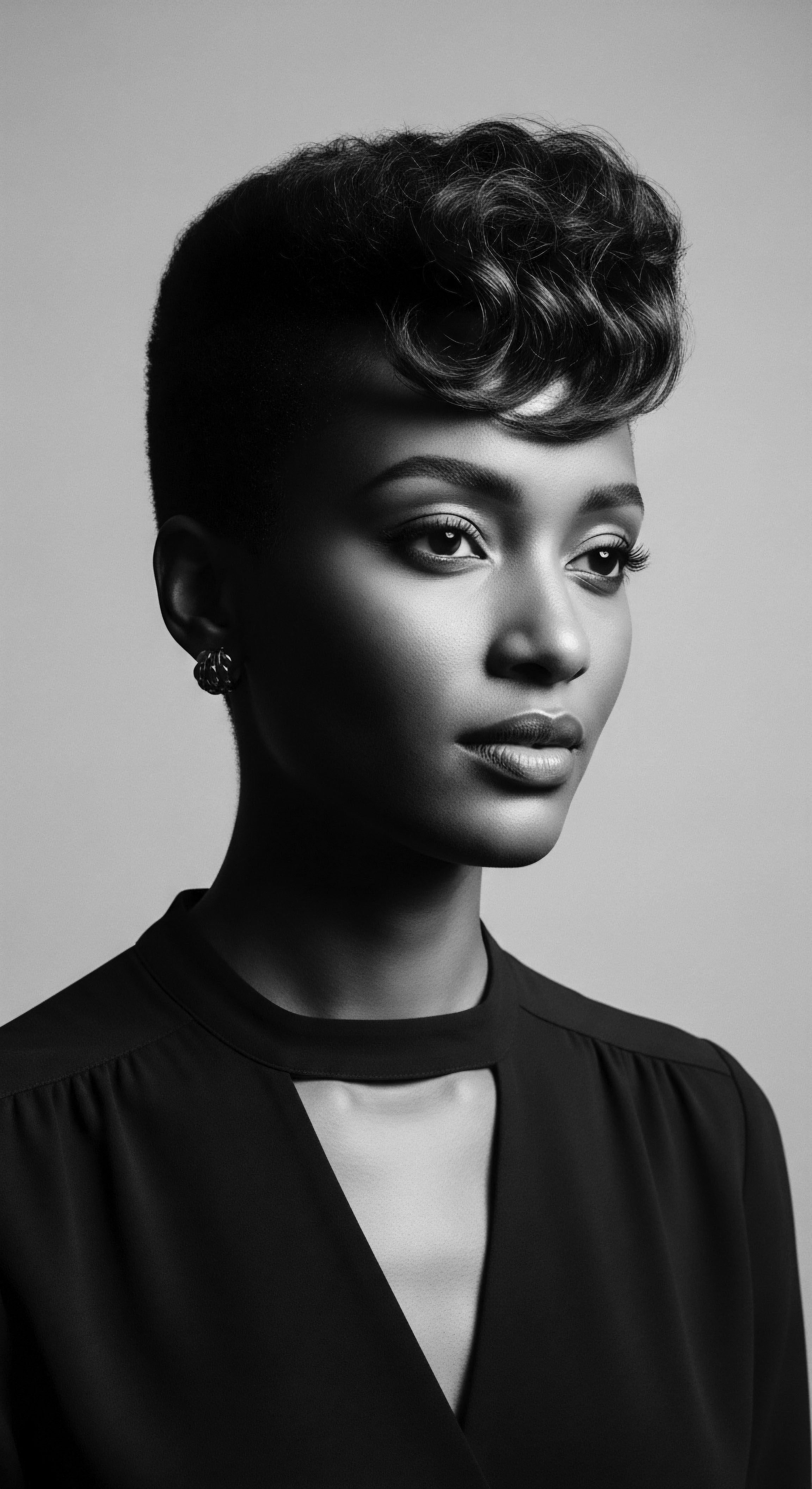
The Hair’s Natural Barrier
The hair’s lipid composition forms a crucial natural barrier, a subtle yet powerful defense against the environment. This barrier is not merely a superficial layer; it is an integrated system that protects the hair from moisture loss, reduces friction, and shields against physical and chemical damage. The outermost layer of the hair, the cuticle, is fortified by these lipids, which help to keep its protective scales flat and smooth.
When this lipid barrier is compromised, the cuticle scales can lift, exposing the inner cortex and making the hair vulnerable to dehydration and breakage. This protective role of lipids is especially pertinent for textured hair, which, due to its unique structural characteristics, can be more prone to dryness and fragility.
This protective shield, formed by the interplay of various lipid types, helps to maintain the hair’s hydrophobic nature, meaning its ability to repel water. While water is essential for hydration, excessive absorption and desorption can lead to hygral fatigue, a weakening of the hair fiber. The lipid barrier moderates this interaction, allowing the hair to absorb necessary moisture without becoming oversaturated. This delicate balance is a testament to the hair’s sophisticated biological design, a design that ancestral care practices instinctively sought to uphold and reinforce through the careful selection of natural emollients.
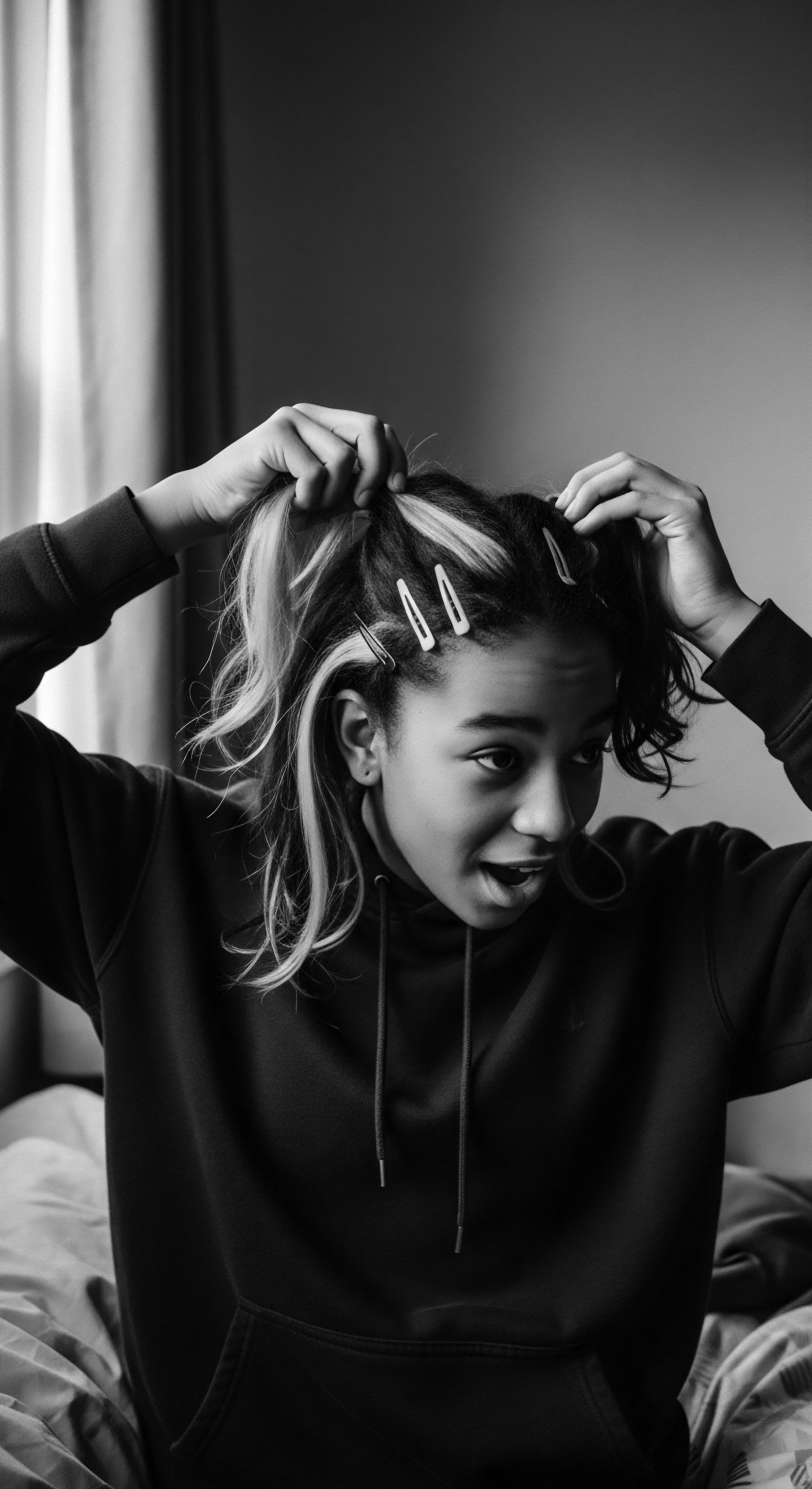
Ancestral Echoes of Lipid Care
For generations, within Black and mixed-race communities, the care of hair has been a sacred art, a tradition steeped in knowledge passed from elder to youth. These practices, though not articulated in the language of modern chemistry, inherently addressed the lipid needs of textured hair. The consistent application of natural butters and oils, derived from indigenous plants, served as an ancestral science, intuitively recognizing the hair’s thirst for moisture and protection. These rituals were not just about aesthetics; they were acts of communal bonding, expressions of identity, and acknowledgments of hair as a living extension of self and lineage.
The historical record, though often fragmented, offers glimpses into these profound connections. Consider the widespread use of Shea Butter (Vitellaria paradoxa) across West Africa. This revered butter, extracted from the nuts of the karite tree, has been a cornerstone of hair and skin care for millennia. Its rich fatty acid profile, including oleic and stearic acids, provides deep conditioning and sealing properties, intuitively compensating for the uneven distribution of natural sebum along coiled strands.
Archaeological evidence even suggests the use of a stearic acid-rich material, possibly shea butter, in ancient Egyptian hair care dating back 2600-3500 years. This enduring practice speaks volumes about an inherited understanding of how to nurture hair’s lipid needs, long before the molecular structure of fatty acids was known.
This legacy of care, rooted in a deep respect for natural resources and a keen observation of hair’s behavior, forms the bedrock of our contemporary understanding of lipid composition. It reminds us that scientific discovery often affirms the enduring wisdom of our forebears, revealing the precise mechanisms behind practices that have sustained and beautified textured hair for countless generations. The fundamentals of lipid composition, therefore, are not merely biological facts; they are echoes from the source, guiding us back to the heart of ancestral care.

Intermediate
Moving beyond the foundational understanding, the intermediate exploration of lipid composition invites a deeper appreciation for the intricate dance between these vital fatty substances and the unique morphology of textured hair. This layer of understanding unpacks the specific types of lipids, their locations within the hair fiber, and how their collective presence dictates the hair’s distinct physical characteristics and its inherent vulnerabilities. It is here that we begin to see the subtle yet powerful ways in which lipid architecture shapes the lived experience of Black and mixed-race hair, influencing everything from daily styling routines to the efficacy of traditional conditioning rituals. The meaning of lipid composition here expands to encompass its active role in hair’s daily life, a dynamic interplay of protection, hydration, and structural integrity.
Hair lipids are not a monolithic entity; they comprise a diverse family of molecules, each contributing to the hair’s overall well-being. The most prominent among these are Fatty Acids, both free and esterified, alongside Cholesterol, Cholesterol Sulfate, and Ceramides. These components are strategically distributed throughout the hair shaft. For instance, the outermost layer, the cuticle, contains a significant amount of a unique lipid called 18-methyleicosanoic acid (18-MEA), which is covalently bound to the cuticle surface.
This particular fatty acid plays a significant role in the hair’s hydrophobicity, contributing to its water-repelling qualities and reducing friction between individual strands. When this protective layer of 18-MEA is damaged, the hair becomes more prone to tangling and breakage.
Within the hair’s internal structure, particularly the cell membrane complex (CMC) that acts as the “glue” between keratin cells, other lipids reside. Ceramides, a specific class of lipid molecules, are particularly noteworthy for their role in holding the cuticle cells together. They are akin to the mortar between bricks, ensuring the cuticle remains sealed and intact.
When ceramide levels are depleted, whether through environmental stressors or harsh chemical treatments, the cuticle scales can lift, leading to increased porosity, dryness, and a dull appearance. This internal lipid framework is a silent guardian, working tirelessly to preserve the hair’s strength and elasticity from within.
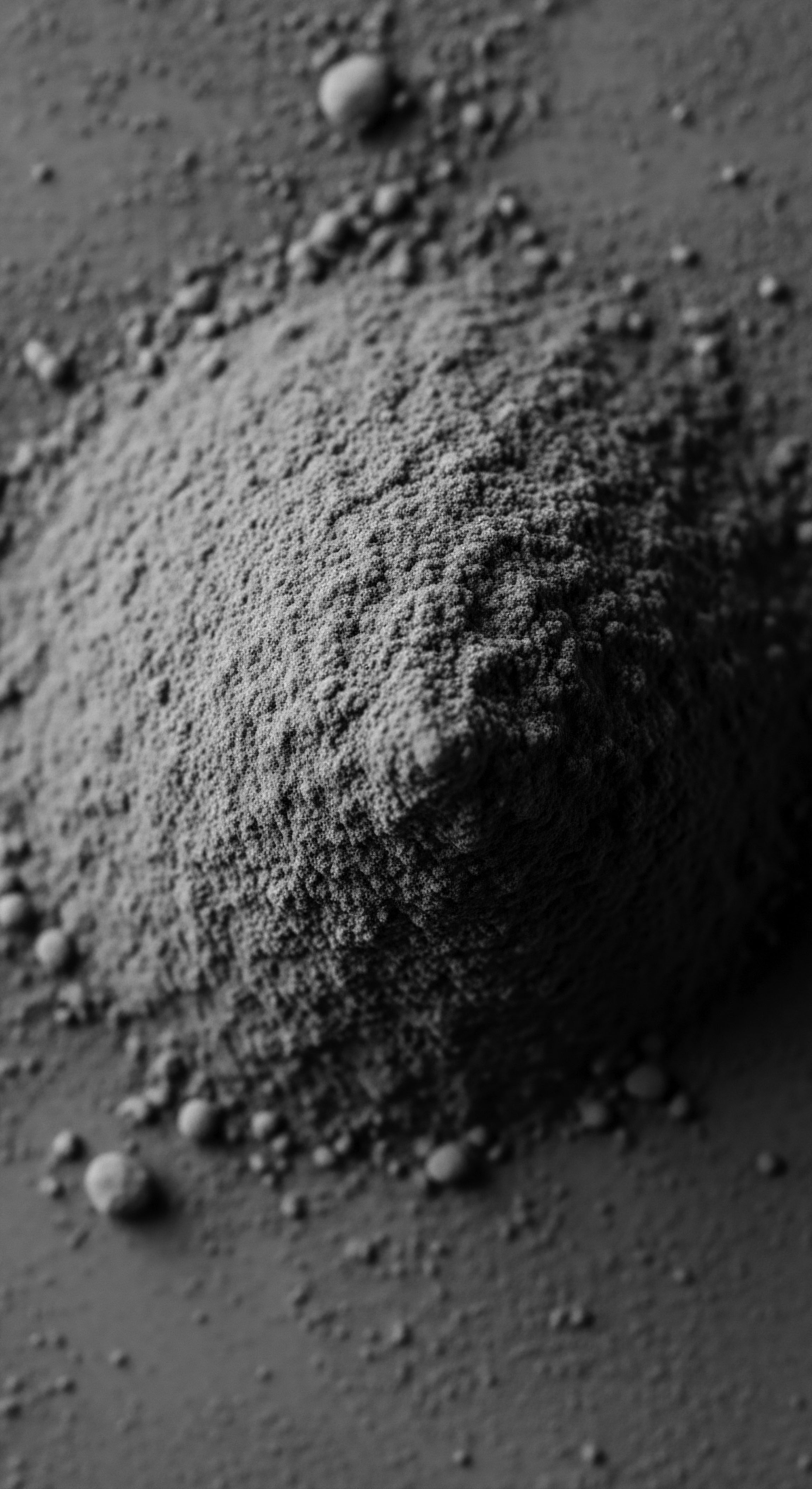
The Paradox of Textured Hair Lipids
A compelling aspect of lipid composition in textured hair lies in a fascinating paradox. Research indicates that Afro-textured hair, despite often being characterized as dry, actually possesses a higher overall lipid content compared to Asian or Caucasian hair. Studies reveal that African hair can have 1.7 times more internal lipids than other ethnic groups, with some estimations placing the overall lipid content 2.5 to 3.2 times higher than European and Asian hair. This finding challenges simplistic assumptions about dryness and invites a deeper inquiry into the nuanced relationship between lipid presence and hair hydration.
Afro-textured hair often presents a fascinating paradox ❉ possessing a higher total lipid content, yet frequently experiencing dryness due to its unique structural configuration.
The explanation for this seeming contradiction lies in the unique helical and elliptical structure of textured hair. While the lipids are abundant, their distribution along the highly curved hair shaft is often uneven. The natural sebum from the scalp struggles to travel down the spirals of textured hair, leaving the ends and mid-lengths more vulnerable to dryness and environmental exposure.
Moreover, the very presence of these abundant lipids in Afro-textured hair has been observed to influence the organization of keratin, potentially leading to a more disordered internal structure that affects how the hair interacts with water. This structural characteristic, while lending itself to the beautiful diversity of textured patterns, also means that the hair’s inherent lipid wealth cannot always translate into optimal moisture retention without intentional care.
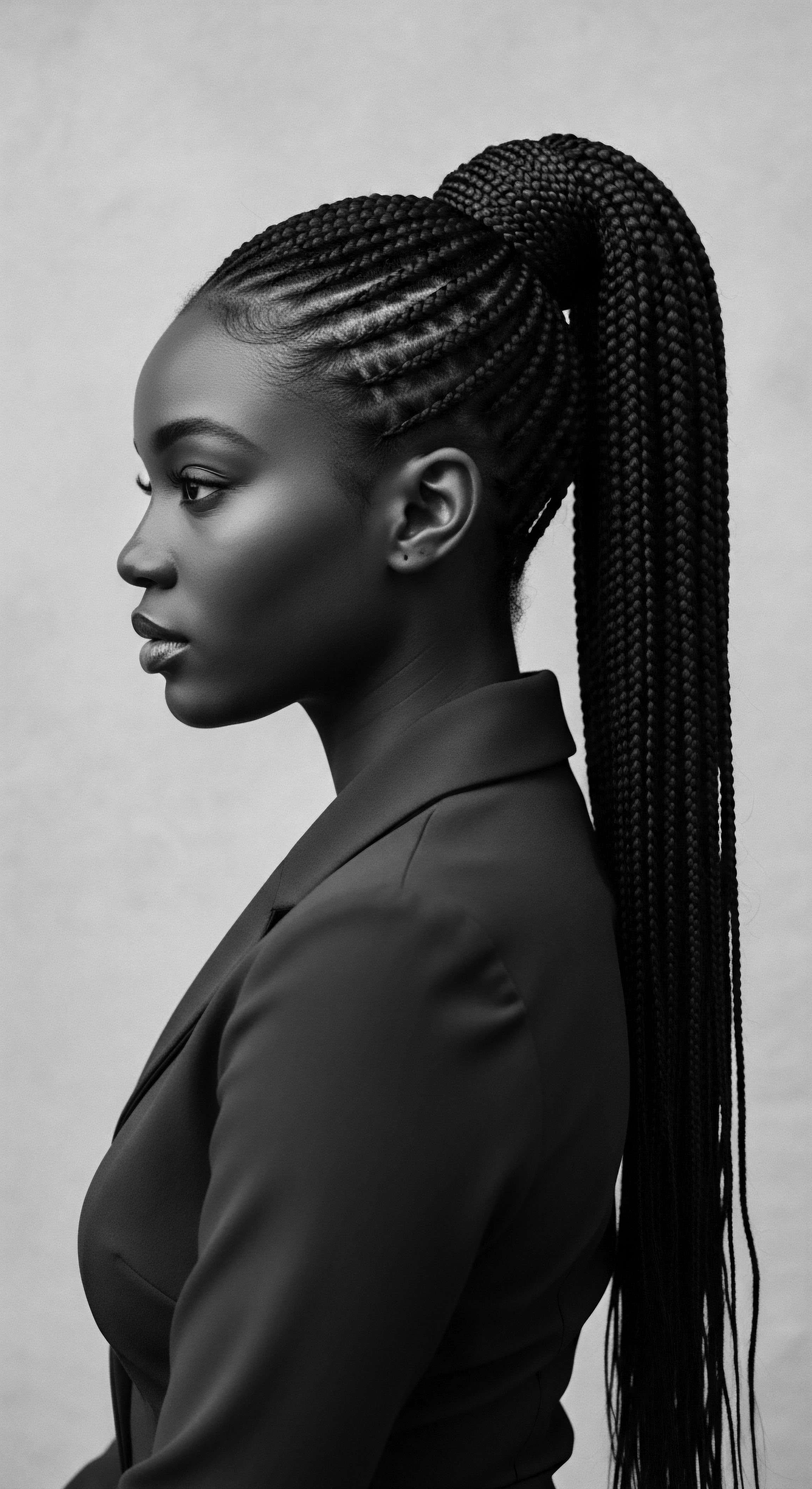
Ancestral Wisdom and Lipid Support
The historical practices of textured hair care, especially within Black and mixed-race communities, reflect an intuitive response to these inherent lipid dynamics. Generations of caregivers understood, perhaps not through molecular diagrams, but through lived experience, the hair’s need for external lipid replenishment. The application of rich, natural butters and oils was not a casual act; it was a deliberate ritual to seal in moisture, protect the strands, and enhance their natural sheen. These practices were a tender thread connecting daily care to a deep understanding of hair’s intrinsic properties.
Consider the widespread use of Castor Oil (Ricinus communis) in many Afro-diasporic traditions. This viscous oil, rich in ricinoleic acid, has been revered for its conditioning and sealing properties, helping to fortify the hair’s external lipid barrier and reduce moisture loss. Its density and ability to coat the hair shaft made it a powerful ally in maintaining the integrity of textured strands, especially those prone to breakage. This ancient knowledge, passed down through oral traditions and communal learning, demonstrates an ancestral grasp of how to support the hair’s lipid needs through external application, intuitively compensating for structural challenges.
The wisdom of these traditions, rooted in observation and communal practice, provided a framework for maintaining hair health that modern science now increasingly validates. The meaning of lipid composition, in this intermediate context, expands beyond a static chemical description to encompass a dynamic interplay with hair morphology and the living traditions of care that have sustained textured hair for centuries. It is a story of adaptation, resilience, and profound ancestral insight.
| Ingredient Shea Butter (Vitellaria paradoxa) |
| Ancestral Use & Heritage Connection A cornerstone of West African hair care for millennia, used to soften, moisturize, and protect hair from harsh climates. Symbolizes community and economic empowerment for women. |
| Modern Scientific Link to Lipids Rich in fatty acids (oleic, stearic), provides occlusive barrier to seal moisture, reduces transepidermal water loss, and offers anti-inflammatory benefits to the scalp. |
| Ingredient Castor Oil (Ricinus communis) |
| Ancestral Use & Heritage Connection Widely used in Afro-Caribbean and African American traditions for conditioning, strengthening, and promoting scalp health, often associated with growth and thickness. |
| Modern Scientific Link to Lipids High in ricinoleic acid, a unique fatty acid that provides a thick, protective coating, helping to reduce protein loss and seal the hair cuticle, thereby retaining moisture. |
| Ingredient Coconut Oil (Cocos nucifera) |
| Ancestral Use & Heritage Connection Utilized in various tropical and diasporic communities for deep conditioning, detangling, and scalp health, often associated with hair strength and shine. |
| Modern Scientific Link to Lipids Unique ability to penetrate the hair shaft due to its small molecular size and high affinity for hair proteins, reducing protein loss and fortifying internal lipid structures. |
| Ingredient These ingredients represent a legacy of intuitive understanding, demonstrating how ancestral practices provided essential lipid support for textured hair, affirming a continuous thread of hair understanding. |
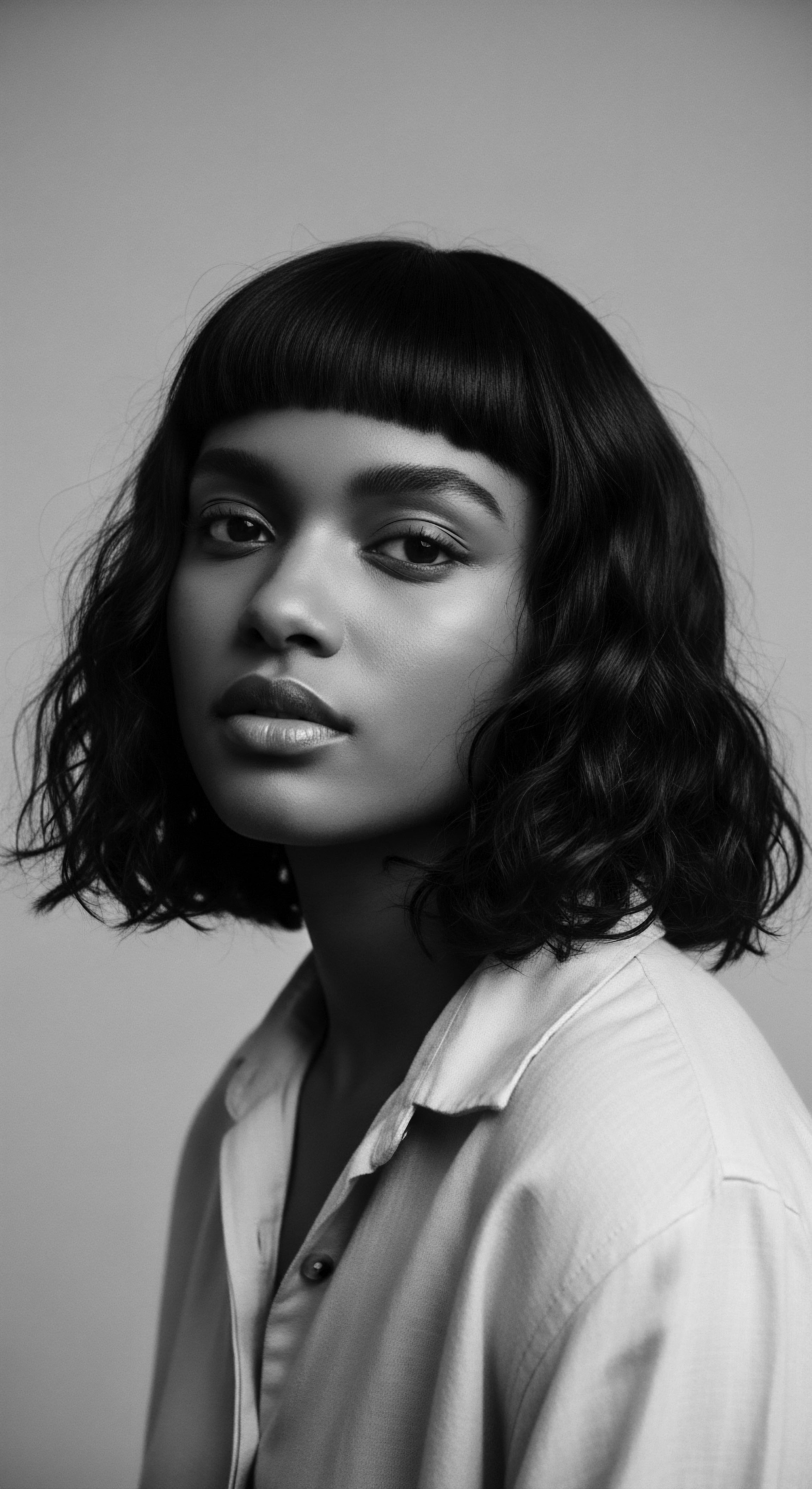
Academic
The academic understanding of Lipid Composition in textured hair represents a rigorous scholarly pursuit, transcending superficial observations to delve into the molecular architecture, physiological implications, and the profound interplay with genetic and environmental factors. This level of inquiry dissects the very definition of ‘Lipid Composition’ to encompass not only the quantitative presence of various lipid classes but also their spatial distribution, conformational states, and dynamic interactions with keratin proteins. For textured hair, this examination becomes a critical lens through which to comprehend its inherent biomechanical properties, its distinct susceptibility to damage, and the scientific rationale underlying millennia of ancestral care practices. It is a domain where the meaning of lipid composition is elucidated through precise analytical techniques, revealing insights that affirm the sophisticated, yet often unwritten, knowledge embedded within Black and mixed-race hair heritage.
From a biochemical standpoint, hair lipids are a heterogeneous collective, primarily comprising Free Fatty Acids (FFAs), Cholesterol, Cholesterol Sulfate (ChS), and various Ceramides. The concentration and specific ratios of these lipids vary significantly across different hair types, a variation that contributes substantially to phenotypic diversity. Notably, Afro-textured hair exhibits a quantitatively higher total lipid content, with internal lipids being particularly abundant—approximately 1.7 times greater than in Caucasian and Asian hair.
Despite this apparent lipid richness, Afro-textured hair is frequently characterized by dryness and fragility. This apparent contradiction forms a central academic inquiry.
The prevailing hypothesis attributes this paradox to the unique helical and elliptical morphology of Afro-textured hair fibers. The extreme curvature of the hair shaft impedes the efficient migration of sebaceous lipids from the scalp along the entire length of the strand, leading to differential lipid distribution and inherent dryness at the mid-shaft and ends. Furthermore, research suggests that the elevated internal lipid content in Afro-textured hair may contribute to a more disordered arrangement of keratin intermediate filaments within the cortex. This structural disorganization, as evidenced by X-ray diffraction analysis, can affect the hair’s mechanical properties and its interaction with water, potentially leading to increased permeability and vulnerability to hygral fatigue upon repeated wetting and drying cycles.
A particularly compelling area of academic exploration involves the role of specific lipid classes, such as ceramides, in maintaining hair integrity. While Afro-textured hair generally has a higher overall lipid content, some studies suggest it may have comparatively lower levels of ceramides than Caucasian hair. Ceramides are vital components of the cell membrane complex (CMC), acting as the intercellular cement that binds cuticle cells together.
A deficiency in ceramides can compromise the cuticle’s barrier function, leading to increased porosity, moisture loss, and susceptibility to external damage. This insight provides a scientific underpinning for the historical emphasis on occlusive and emollient ingredients in traditional Black hair care, as these practices would intuitively compensate for potential ceramide deficiencies or structural vulnerabilities.
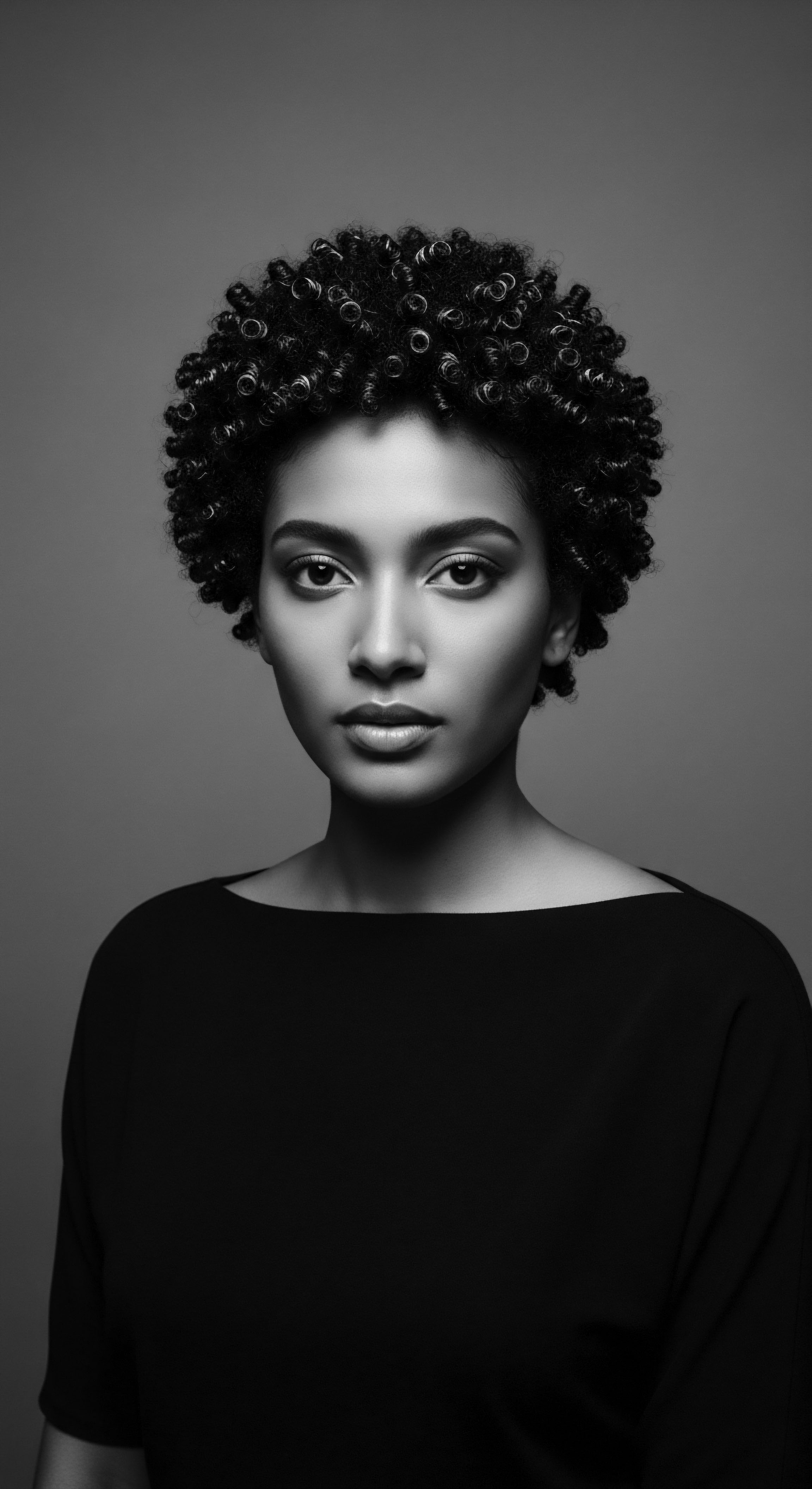
Ancestral Bioremediation and Lipid Support
The ancestral practices of hair care within Black and mixed-race communities, often dismissed as anecdotal or folkloric, represent a sophisticated form of bioremediation and intuitive material science. These traditions, spanning continents and centuries, frequently involved the systematic application of lipid-rich plant derivatives. The consistent use of materials like Shea Butter and Coconut Oil, for instance, can be re-evaluated through the lens of lipid composition as a deliberate strategy to address the inherent structural and lipidic characteristics of textured hair.
Consider the profound historical example of Shea Butter’s Enduring Role in West African Hair Care. Its consistent application across generations was not merely a cosmetic choice but a strategic intervention. Gas chromatography-mass spectrometry analysis of hair from ancient Egyptian mummies (dating back 2600-3500 years before present) has revealed the presence of a stearic acid-rich material, which researchers posit could have been shea butter. This suggests a continuous lineage of knowledge regarding the beneficial properties of such lipids.
Shea butter, with its high concentration of oleic and stearic fatty acids, functions as a powerful occlusive agent, forming a protective film on the hair surface that mitigates moisture loss and reduces friction. For Afro-textured hair, where sebum distribution is often uneven due to curl patterns, this external lipid layer provides a crucial supplement, reinforcing the hair’s natural barrier and reducing dryness along the lengths.
Ancestral hair care, particularly the use of lipid-rich plant derivatives like shea butter, represents an early, intuitive form of material science, addressing the unique needs of textured hair.
Moreover, the historical emphasis on protective styling alongside these lipid applications speaks to an ancestral understanding of mechanical stress on fragile hair. By braiding or twisting hair after moisturizing with oils and butters, communities instinctively reduced exposure to environmental factors and minimized daily manipulation, thereby preserving the integrity of the lipid-fortified hair shaft. This holistic approach, combining external lipid supplementation with structural protection, exemplifies a comprehensive, empirically derived system of hair care that predates modern scientific classification. The meaning of lipid composition here expands beyond mere chemical structure to encompass its deep cultural and historical significance as a foundation for hair resilience and beauty.
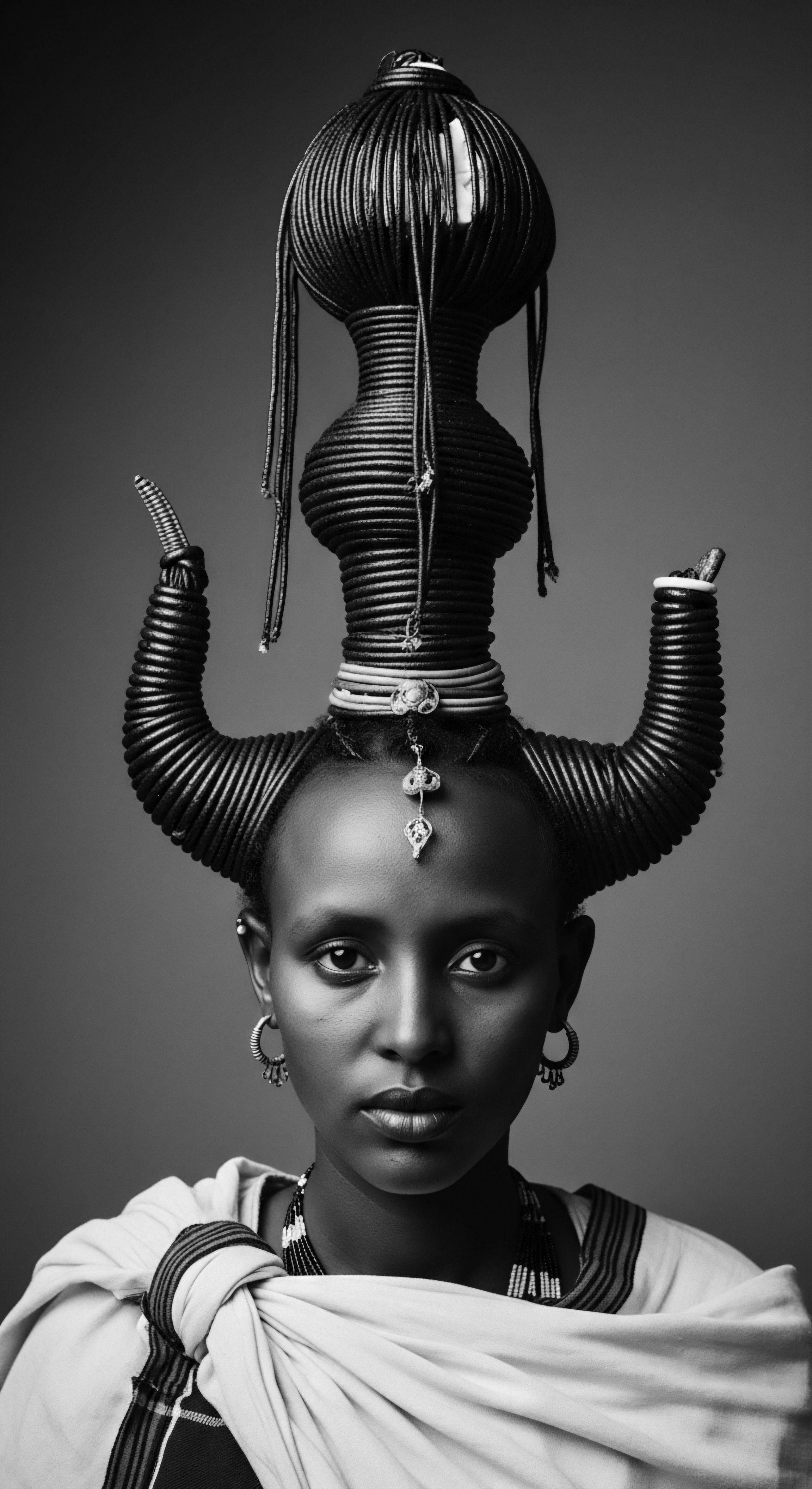
Implications for Modern Understanding and Future Directions
The academic investigation of lipid composition in textured hair offers profound implications for contemporary hair science and product development. By precisely delineating the specific lipid profiles and structural nuances of Afro-textured hair, researchers can move beyond generalized formulations to create targeted interventions. For instance, understanding the potential ceramide deficiency in Afro-textured hair can guide the development of products enriched with these specific lipids, aiming to reinforce the cuticle and improve moisture retention. Similarly, recognizing the disordered keratin structure influenced by internal lipids might lead to novel approaches that optimize lipid-keratin interactions without compromising the hair’s natural curl pattern.
The ongoing research into hair lipids, particularly those integral to the hair shaft, is critical. Studies continue to explore the precise roles of different fatty acids and cholesterol derivatives in maintaining hair health and preventing damage. The complex interplay between endogenous and exogenous lipids, and how this balance is disrupted by environmental stressors or chemical treatments, provides a fertile ground for further inquiry.
- Internal Lipid Function ❉ Endogenous lipids, such as 18-Methyleicosanoic Acid (18-MEA), are covalently bound to the cuticle surface, playing a primary role in hair’s hydrophobicity and reducing friction between strands.
- Ceramide Dynamics ❉ Ceramides act as the “glue” holding cuticle cells together, and their depletion can lead to increased hair porosity and vulnerability.
- Fatty Acid Profiles ❉ The specific fatty acid composition, including oleic and stearic acids, contributes to the hair’s softness, flexibility, and ability to retain moisture.
- Cholesterol and Cholesterol Sulfate ❉ These lipids, present in higher amounts in African hair, contribute to the hair’s overall lipid content and may influence keratin organization.
The academic discourse on lipid composition in textured hair is not merely about scientific classification; it is about honoring a heritage of ingenuity. It validates the efficacy of ancestral practices through the rigorous lens of modern science, thereby creating a bridge between historical wisdom and contemporary innovation. The future of textured hair care, informed by this deep understanding, holds the promise of formulations and practices that truly speak to the hair’s inherent biology, celebrating its unique heritage and empowering individuals to care for their strands with informed reverence.

Reflection on the Heritage of Lipid Composition
As we conclude this exploration of Lipid Composition, a profound understanding emerges ❉ it is far more than a technical term in the lexicon of hair science. It stands as a living testament to the enduring heritage of textured hair, a whispered story carried within each strand. The journey from elemental biology to ancient practices, through the living traditions of care and community, and into its role in voicing identity and shaping futures, reveals a continuous, unbroken thread of knowledge and resilience. This is the very Soul of a Strand, where the scientific meets the sacred, and the biological mirrors the historical.
The inherent lipid characteristics of textured hair, often a source of both beauty and challenge, have shaped care rituals for millennia. From the deliberate choices of ancestral communities who turned to nutrient-rich plant butters and oils, to the contemporary scientific insights that now quantify these intuitive practices, there is a harmonious continuum. The ‘Echoes from the Source’ resonate with the deep wisdom of those who, through observation and inherited knowledge, understood the hair’s need for replenishment and protection. They cultivated practices that intuitively supported the hair’s lipid barrier, compensating for its unique structural tendencies and ensuring its vitality in diverse climates.
This journey of understanding is also a ‘Tender Thread,’ weaving together the communal aspects of hair care. The hands that braided, oiled, and adorned were not merely styling; they were transmitting knowledge, reinforcing identity, and nurturing connections. The application of shea butter, the careful sectioning for protective styles, the shared moments of grooming—each act was infused with an understanding of hair’s delicate balance, a balance profoundly influenced by its lipid composition. These traditions, born from necessity and creativity, speak to a deep reverence for the hair as a vital part of self and community, a legacy that continues to inform and inspire.
The story of lipid composition in textured hair is a vibrant reflection of ancestral wisdom, affirming that scientific discovery often echoes the enduring practices of our forebears.
Looking towards ‘The Unbound Helix,’ our evolving comprehension of lipid composition empowers us to shape futures grounded in heritage. It encourages us to approach hair care not as a pursuit of conformity, but as a celebration of inherent difference. By recognizing the unique lipid profiles and structural needs of textured hair, we can advocate for products and practices that truly honor its legacy, moving beyond universal solutions to embrace tailored care. This knowledge fosters a deeper appreciation for the ingenuity of our ancestors, whose ‘science’ was embodied in their daily rituals, preserving and enhancing the beauty of their strands.
The Lipid Composition, therefore, is more than a biological fact; it is a cultural artifact, a testament to resilience, and a guidepost for conscious care. It reminds us that the quest for hair wellness is intrinsically linked to our ancestral roots, a continuous dialogue between past and present, science and soul. Each drop of oil, every careful detangling, and each moment of appreciation for our coils and curls becomes an act of honoring this profound, living heritage.
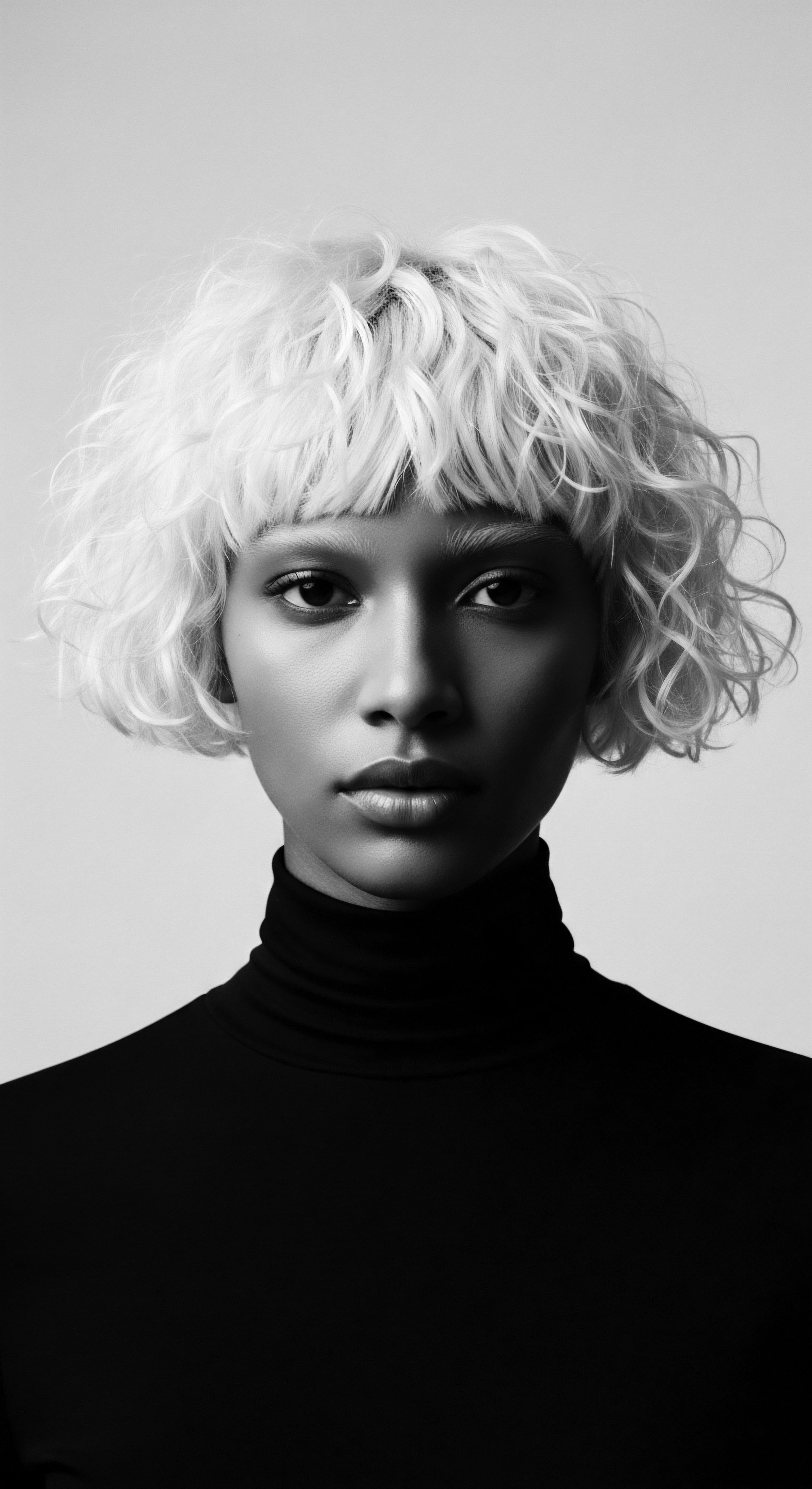
References
- Almeida, S. Goulart, M. Coderch, L. & Calado, A. (2018). Keratins and lipids in ethnic hair. International Journal of Cosmetic Science, 40(6), 565-573.
- Dias, M. F. R. G. & D’Amico, E. A. (2022). The Genomic Variation in Textured Hair ❉ Implications in Developing a Holistic Hair Care Routine. Cosmetics, 9(6), 114.
- Hexis Lab. (2024). The Genomic Variation in Textured Hair ❉ Implications for Holistic Hair Care. Retrieved from Hexis Lab website.
- Coderch, L. & Calado, A. (2021). A study shows that the differences between African, Caucasian and Asian hair are determined by their lipid distribution. Biotech Spain.
- Dias, M. F. R. G. & D’Amico, E. A. (2024). The Genomic Variation in Textured Hair ❉ Implications in Developing a Holistic Hair Care Routine. Preprints.org.
- Hair Folli. (2024). Unlock the Power of Ceramides for Hair ❉ Comprehensive Guide to Benefits and Top Products. Retrieved from Hair Folli website.
- Healthline. (2018). Shea Butter for Hair ❉ Raw, Hair Growth, and Natural Hair. Retrieved from Healthline website.
- Minimalist. (2020). Ceramides for Skin and Hair ❉ Benefits & Uses. Retrieved from Minimalist website.
- Garnier. (2024). What Are Ceramides for Hair? Ceramide Benefits. Retrieved from Garnier website.
- Ciafe. (2023). Shea Butter – Explainer. Retrieved from Ciafe website.
- Obscure Histories. (2024). The Globalization of Shea Butter. Retrieved from Obscure Histories website.
- Maranz, S. & Wiesman, Z. (2004). The Evolution of Shea Butter’s “Paradox of paradoxa” and the Potential Opportunity for Information and Communication Technology (ICT) to Improve Quality, Market Access and Women’s Livelihoods across Rural Africa. Forests, 15(3), 405.
- Fernandes, S. M. et al. (2023). Hair Lipid Structure ❉ Effect of Surfactants. Cosmetics, 10(4), 108.
- African Fair Trade Society. (2020). A Science-Based Conclusion On Shea Butter Benefits To Hair And Scalp. Retrieved from African Fair Trade Society website.
- Kim, E. K. et al. (2014). The Ethnic Differences of the Damage of Hair and Integral Hair Lipid after Ultra Violet Radiation. Annals of Dermatology, 26(3), 329–334.
- Nazzaro-Porro, M. et al. (1990). The fatty acid composition of hair follicles and hair shafts. Journal of Investigative Dermatology, 94(6), 844-848.
- Soares, J. G. et al. (2015). Black women’s hair ❉ the main scalp dermatoses and aesthetic practices in women of African ethnicity. Anais Brasileiros de Dermatologia, 90(5), 707–712.
- Gavazzoni Dias, M. F. R. (2015). Hair Oils ❉ Indigenous Knowledge Revisited. International Journal of Trichology, 7(1), 2-10.
- Cécred. (2025). Understanding Hair Oiling ❉ History, Benefits & More. Retrieved from Cécred website.
- Reddit. (2021). No raw oils and butters vs. Traditional African hair care? ❉ r/Naturalhair. Retrieved from Reddit.com.
